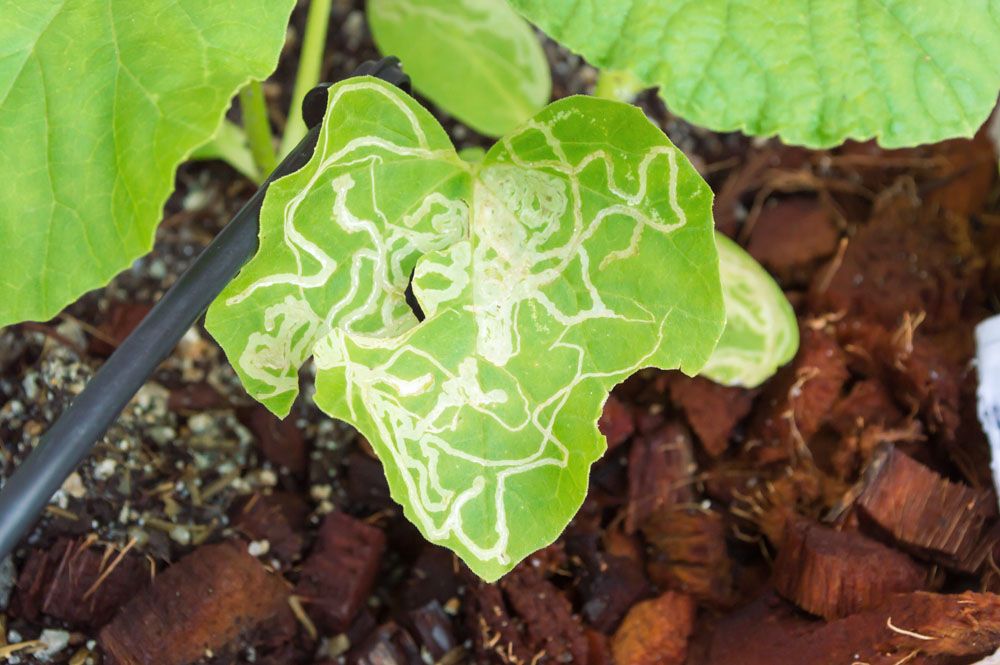
Leafminers
Leafminer
Leafminer is a general word that refers to the larvae of Lepidoptera, Diptera, and Hymenoptera that eat and mature inside plant leaves. Typically, growers see irregular lines appearing on foliage, with frass evident inside the discoloured lines. The pattern made by the feeding tube may indicate the exact insect infecting your plants, but pay special attention to which plants are being attacked, as this may assist identify the bug. The two most prevalent leafminer species in Minnesota vegetable gardens are the spinach leafminer and the vegetable (serpentine) leafminer.
The life cycle of Leafminer:
Small black to grey flies with yellow patterns are the adults. Females feed on plant sap by puncturing leaves and laying eggs within the leaf tissues. Eggs hatch in 2 to 4 days and larvae feed between the top and lower surfaces of the leaves, creating unique curving, white tunnels or mines that are frequently the first sign of leafminers. Larvae come from the mines and pupate on the leaf’s surface or, more typically, in soil fissures. Several generations can occur each year when the temperature is warm, and the entire life cycle can be completed in less than twenty one days.
Damage of Leafminer:
Leafminers have little effect on plant growth, although they can damage edible leaves. Leafminers may cause a wide range of issues. Female adult flies utilize their ovipositors (egg-laying organs) to break through the leaves, create feeding areas, and lay eggs. These punctures cause the stippling pattern on the wrapper and cap leaves. When the egg hatches and the larvae eat between the top and lower plant leaves, the puncture locations where the eggs are deposited ultimately form mines. Even if the mined leaves are removed during harvest, the larvae can contaminate the lettuce head when they escape the mines to pupate. Leafminer damage is the most common way to identify this insect. It usually manifests itself in the form of yellow squiggly lines on the leaves. The leaf miner larvae have practically drilled their way through the leaf at this point. Spots or blotches may form as a result of leafminer damage.
Controlling Leafminers:
- Early in the season, leafminer numbers may be monitored, and action is taken if necessary. Adults are attracted to and trapped by blue sticky traps before they can deposit eggs that will hatch and cause harm to the plant. When leafminer eggs are discovered, they should be physically removed.
- Suppose you’ve had problems with leafminers in the past, plant trap crops like lamb’s quarters, columbine, and velvetleaf. They provide a more appealing option for leafminers, diverting them away from the crops that are being protected.
- Diglyphus area is a helpful wasp that parasitizes and kills leafminer larvae before they reproduce. When D. idea is released early in the season, the best effects are obtained before leafminer populations have developed to substantial numbers.
- If you observe leafminer damage on your leaves, spray all plant surfaces with Spinosad (Monterey Garden Insect Spray). Spinosad prevents larvae from eating and kills them after 24-48 hours of ingestion. If the damage continues, repeat the application 2-3 times throughout the growing season.
